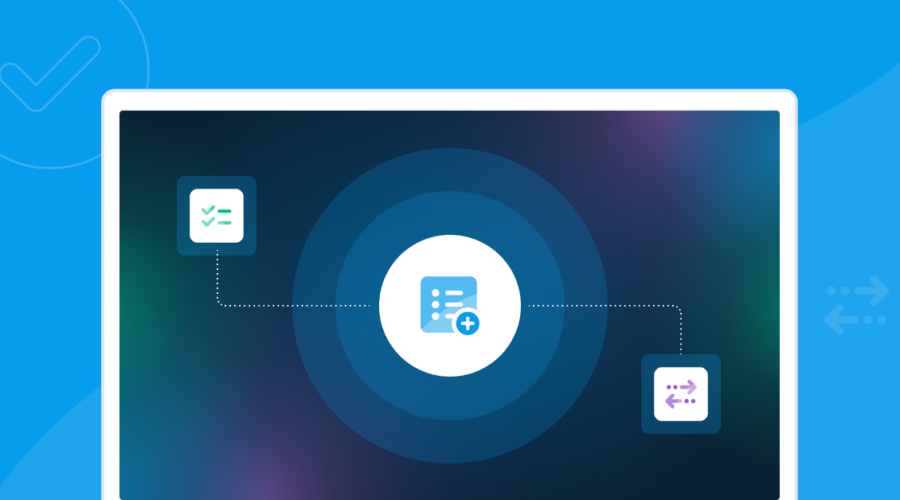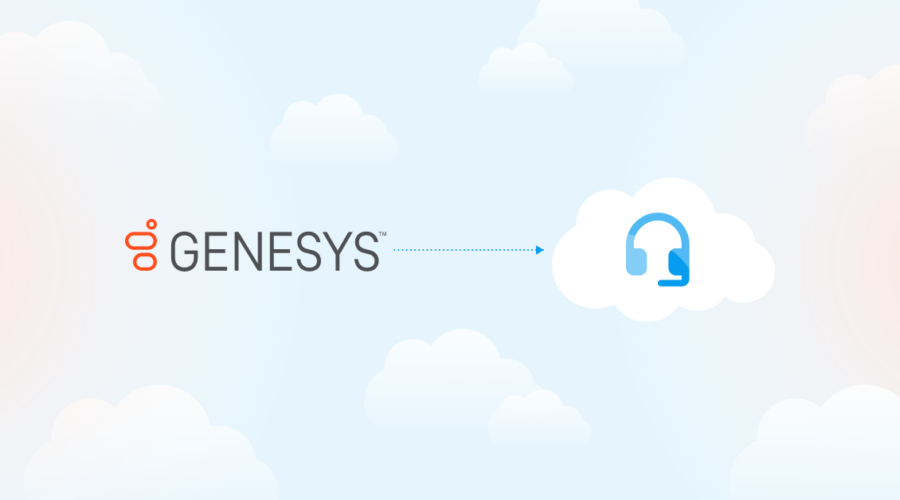Fraudsters are eating your lunch—and your breakfast, dinner, and midnight snacks. In 2022 alone, every $1 lost to fraud cost U.S. financial services firms $4.23, compared to $3.25 in 2019 and $3.64 in 2020. Financial institutions also reported that 61% of fraud cases touch the phone channel, which makes your contact center the battleground for loyalty.
Your contact center is the cornerstone of customer experiences (CX). But fraudsters can put all your hard work at risk—undermining productivity, revenue, and delightful experiences. To prevent that from happening, contact centers are adopting fraud scores as a key part of caller authentication.
What is a fraud score?
Fraud scores are a high-level fraud indicator businesses use to dial up or scale back caller authentication measures. By helping you verify a caller’s identity based on existing information about known fraudsters or suspicious actors, fraud scores tell agents how to approach authentication, and if they need to take additional steps to protect genuine customers.
Fraud scoring does this by measuring how risky the caller’s profile is based on their current actions, such as spoofing and associated fraudulent activity, and adds or subtracts points based on the known data points about your caller.
Think of fraud scoring as one tool in your caller authentication toolbox: it’s strongest when layered with other types of voice authentication.
How fraud scoring works
Different fraud scores are calculated with different metrics in mind. Bandwidth’s caller authentication solution, Call Verification, calculates fraud scores within the contact center using a two-pronged approach:
- Spoof detection: Agents know if they can trust the Caller ID or not using Automatic Number Identification (ANI) Validation. Fraudsters often use call spoofing to replace their calling number with the number of a real customer, so ANI validation can help lighten the cognitive burden on your agents and customers with an automated look-up.
- Real-time risk assessment: In real-time, Call Verification cross-references if a number has been previously reported for fraud, or associated with ongoing fraudulent activity, using a well-established national fraud database.
With these scores, Call Verification offers authentication guidance for agents and IVR within milliseconds of an inbound customer call.
An honorable mention: IP Fraud scores
We already know that fraudsters love the voice channel. But depending on your customer support mix and communications channel, Internet Protocol (IP) addresses are used to measure fraud risk.
An IP fraud score is an indicator of the user’s trustworthiness and dependability, so businesses can analyze an IP address to pinpoint potential risk factors, such as anonymization or spoofing. Because we’re focusing on the voice channel, IP fraud scores aren’t factored into the fraud scoring methodology.
How to use voice fraud scores
You know you need fraud scoring—but what does that look like in action? While there are many ways to calculate fraud scores, Bandwidth’s Call Verification categorizes fraud scores based on spoof detection and risk assessment:
- If the account has a low spoof score and a low fraud risk score, your agents could choose step down caller authentication measures.
- If an account has a high spoof score and a medium fraud risk score, your agent could step up authentication, with voice bio authentication or other means of security.
- If there’s a high spoof score and a high fraud risk score, you’re probably dealing with a fraudster. How you approach this depends on your internal escalation and procedures.

If someone calls your contact center with a low spoof score, but the number has been associated with fraud, your agents should play it safe by adding authentication measures. On the flip side, if a caller has a low spoof score and a low fraud risk score, agents can feel comfortable breezing through authentication easier.
Our recommended fraud scoring model
Fraud scores typically range from 0-100. We recommend these criteria when evaluating risk:
- 0-10: Low risk
- 11-50: Low spoof
- 51-79: Moderate risk
- 80-100: High risk
Is fraud scoring accurate?
Fraud scores are here to serve as a quick detector by giving agents a high-level overview of the risk associated with callers. This invaluable metric lets agents confidently decide how to proceed, shut a fraudster down, or proceed with care.
The benefits of fraud scoring
More than half (54%) of customers said they would leave a brand after just one poor customer experience. Improving contact center security is a critical piece of your growth, and IT leaders are on the hook to quickly detect call spoofing and flag high-risk callers. However, balancing security and CX can be a difficult line to walk.
But let’s explore all the reasons why fraud scoring can help your CX:
- Improved fraud detection and prevention: Protecting your agents, customers, and brand from fraud is a part of long-term growth. Quickly detect bad actors and shut them down before they can impact your business or customer experience for a safer, stress-free brand experience.
- Cut costs and time: Fighting bad actors leads to lost revenue and lower productivity. A fraud scoring model can help you cut up to 30 seconds, or $0.50+, per call. Use our cost calculator to determine how much you can save in your contact center.
- Better customer experience: Pindrop found that 46% of customers feel answering knowledge-based authentication (KBA) questions are frustrating or completely unnecessary. Fraud scoring lets you eliminate the clunky, repetitive steps of active authentication, from knowledge-based authentication (KBAs) and one-time passwords (OTP), so you can deliver a personalized, seamless CX.
- More efficient agents: When it comes to your contact center, time is literally money. The amount of time you spend on a call directly correlates to how much you have to pay, and how many customers you can service. By automating part of your caller verification, you can increase agent productivity, reduce average handle time (AHT), and drive automation.
- Drive growth and brand loyalty: It’s hard to grow and develop meaningful relationships with a reputation for poor security following you everywhere. Proper security measures can be a driver in acquiring and retaining customers. However, a lack of authentication tools can hinder your objectives and KPIs, and limit your growth.
Is fraud scoring right for you?
There are many different types of fraud scoring tools, and often, contact centers need to layer different authentication solutions to create a secure, efficient contact center.
If you have an enterprise contact center in insurance, banking/finance, healthcare, retail, and telecommunications, you need a serious authentication stack. Fraud scoring, plus voice bio authentication, can help agents face the trickiest of fraudsters.
However, if you need a lighter authentication solution, just fraud scoring is a great option.
How to set fraud scoring via Call Verification
To set up Call Verification’s fraud scoring in your contact center, you only need to follow these steps:
- Deliver SIP INVITE to your CCaaS instance, including the header x-Customer-Ixn, which provides a globally unique call-ID to use to retrieve the scores.
- Use the Bandwidth API to retrieve the fraud and spoof scores associated with the call, using the X-Customer-Ixn value as the active call-ID parameter to identify the call. ML/AI can improve fraud scoring accuracy.
Here’s how Call Verification assigns fraud scores:

Get the checklist on fraud and spam protection

Best practices for fighting contact center fraud
Don’t just stop at your tech stack. Make sure you’re following the recommended best practices to better balance security with CX:
- Train employees thoroughly. You can give agents the tools to fight fraud, but you should also arm them with the knowledge to best use these tools. Make sure agents can recognize and take steps to prevent fraud, and how to best leverage your fraud-fighting toolkit.
- Implement strong authentication measures. Make sure your voice and chat security solutions are up-to-date and capable of mitigating modern fraudsters.
- Establish real-time fraud monitoring. Your toll-free voice provider should offer real-time insights into call volume, fraudulent activity, and anomalies.
- Layer up with voice bio authentication. By using tools to analyze a customer’s unique voice, you may also be able to enable quick, secure access to account information and prevent criminals from gaining access to unauthorized information.
- Use multi-channel authentication. One-time passwords and two-factor authentication boost security because system codes sent directly to that user’s mobile device or email are only accessible by them.
Start using fraud scores
There’s never been a worse time to fall vulnerable to fraud.
Make sure your brand and customers alike are protected with best-in-class security solutions, from 2-factor authentication to fraud scoring and voice bio authentication.



